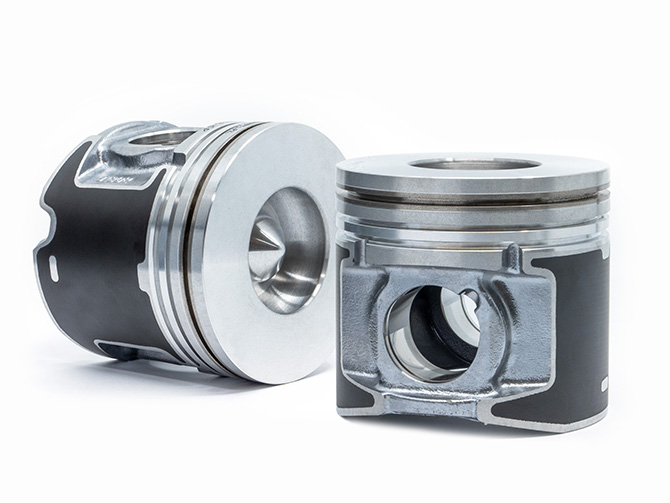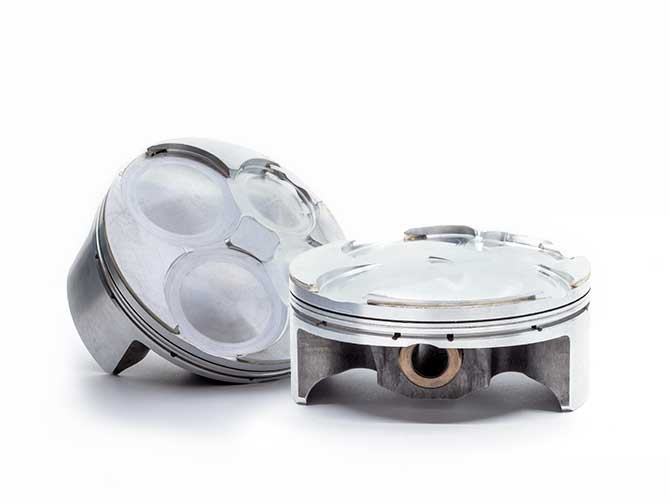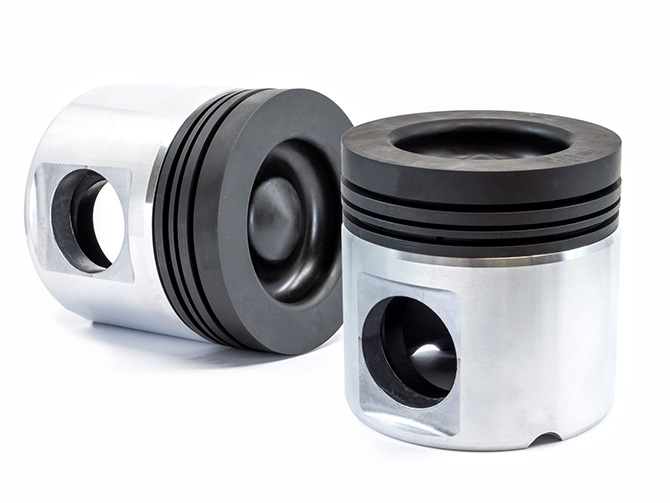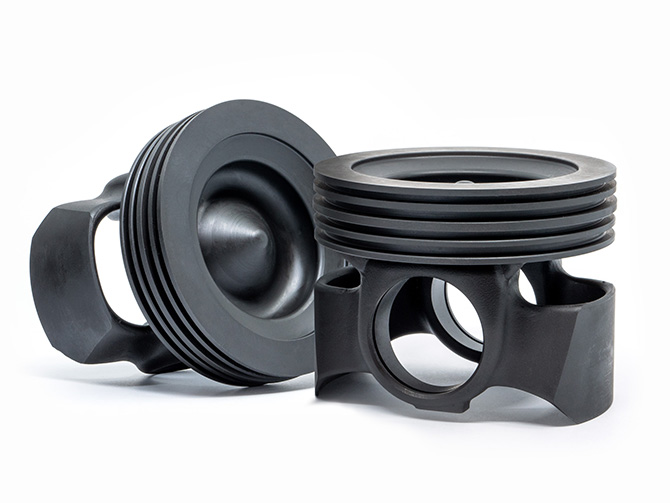Pistons

Gravity Casted Pistons
The pistons are casted in permanent mold using Al-Si alloys that provide high resistance at elevated temperatures for use in petrol and diesel engines.
Some pistons are made with a lamellar grey cast iron ring in correspondence of the first compression groove to limit the wear and a cooling channel (tunnel) in correspondence of the head of the piston in order to avoid an excessive overheating of the piston crown.
For heavy duty application bushings may be introduced at the pin bore to support the contact pressures between the piston and the gudgeon pin.
To limit the friction between piston and cylinder during operation of the engine it is possible to apply special graphite coatings on piston skirt.
Forged Pistons
In the field of high performance engines (i.e. motorbikes, sports applications,…) the modern state of art requires the use of drop-forged pistons.
These components are made with alloys obtained from the inverse extrusion of casted aluminum billets. The alloys used for these pistons are Al-Si alloys which unlike those used for casting pistons allow to achieve a finer structure which results in better mechanical properties.
The use of forged pistons, in addition to allowing to obtain more resistant alloys, allows to have thinner resistant sections with a considerable advantage in terms of weight.
A special feature that can be employed on the forged pistons to limit the excessive wear of the first groove is the application of a coating of hard anodizing.
Also in the forged pistons the application of coatings based on graphite is provided to limit the friction between piston and cylinder.


Forged Pistons
In the field of high performance engines (i.e. motorbikes, sports applications,…) the modern state of art requires the use of drop-forged pistons.
These components are made with alloys obtained from the inverse extrusion of casted aluminum billets. The alloys used for these pistons are Al-Si alloys which unlike those used for casting pistons allow to achieve a finer structure which results in better mechanical properties.
The use of forged pistons, in addition to allowing to obtain more resistant alloys, allows to have thinner resistant sections with a considerable advantage in terms of weight.
A special feature that can be employed on the forged pistons to limit the excessive wear of the first groove is the application of a coating of hard anodizing.
Also in the forged pistons the application of coatings based on graphite is provided to limit the friction between piston and cylinder.

Articulated Piston
Diesel engines evolution and their related emission laws have pushed to achieve more strength engine components, pistons too.
The even more restrictive project constraints were the basis for a deep development of piston structure as generally known.
The first step toward this new progress was the deployment of a steel crown piston that was introduced in the articulated piston into the diesel engine world. Such kind of pistons are made of a martensitic steel crown and an aluminum guiding skirt, assembled together by a floating pin or special bolts.
Steel Piston
The more severe emissions laws, high density power, high combustion peak pressure and longer lifetime were the basis of the most modern piston evolution: the full steel piston.
Made of two forged welded pieces or by investment casting process, the steel piston is the last developed technology employed into a modern Diesel engine.


Steel Piston
The more severe emissions laws, high density power, high combustion peak pressure and longer lifetime were the basis of the most modern piston evolution: the full steel piston.
Made of two forged welded pieces or by investment casting process, the steel piston is the last developed technology employed into a modern Diesel engine.
